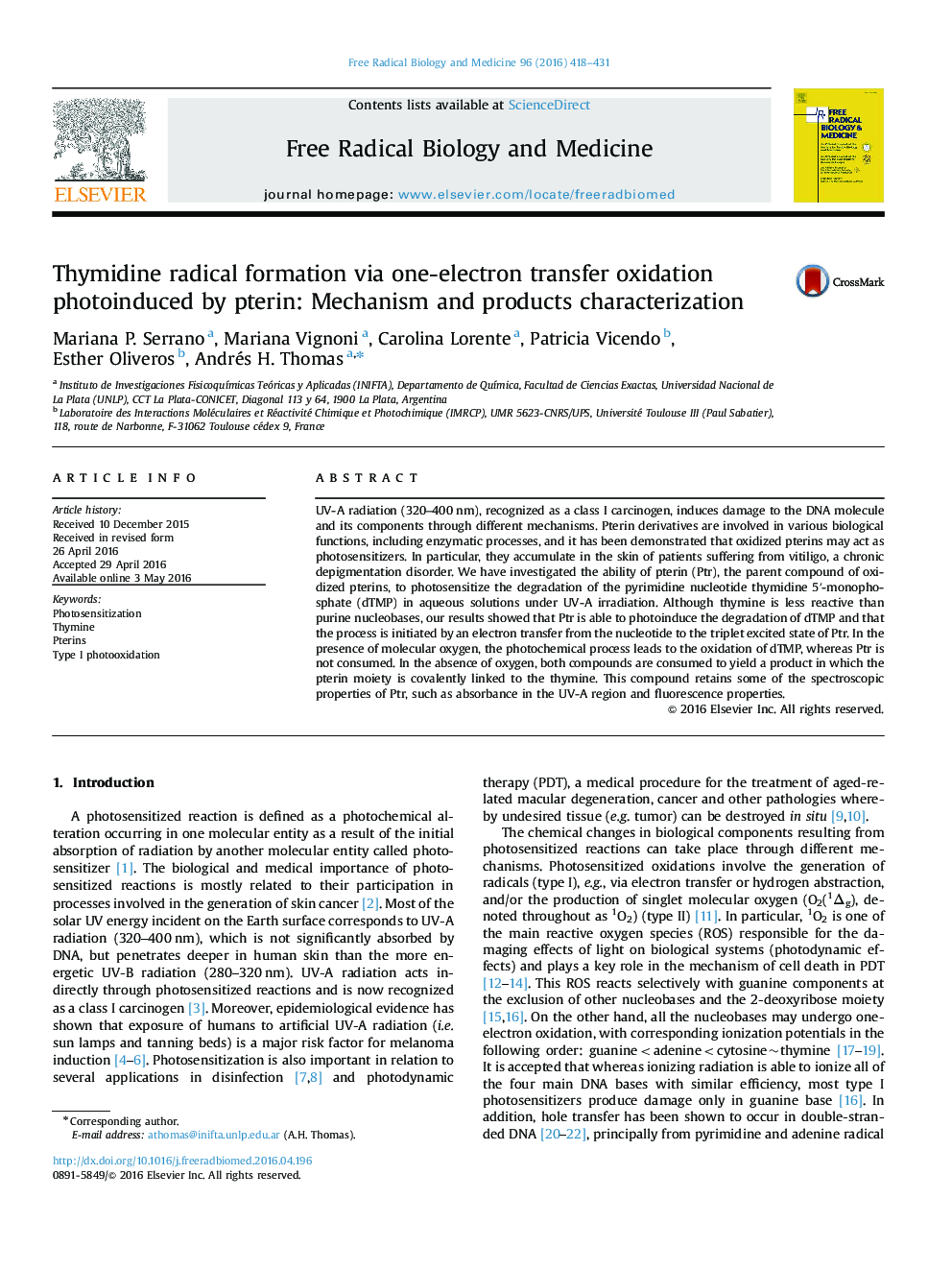| کد مقاله | کد نشریه | سال انتشار | مقاله انگلیسی | نسخه تمام متن |
|---|---|---|---|---|
| 8267883 | 1534947 | 2016 | 14 صفحه PDF | دانلود رایگان |
عنوان انگلیسی مقاله ISI
Thymidine radical formation via one-electron transfer oxidation photoinduced by pterin: Mechanism and products characterization
ترجمه فارسی عنوان
تشکیل رادیکال تیمیدین از طریق اکسیداسیون انتقال یک الکترون از پترین: مکانیزم و مشخصات محصول
دانلود مقاله + سفارش ترجمه
دانلود مقاله ISI انگلیسی
رایگان برای ایرانیان
موضوعات مرتبط
علوم زیستی و بیوفناوری
بیوشیمی، ژنتیک و زیست شناسی مولکولی
سالمندی
چکیده انگلیسی
UV-A radiation (320-400Â nm), recognized as a class I carcinogen, induces damage to the DNA molecule and its components through different mechanisms. Pterin derivatives are involved in various biological functions, including enzymatic processes, and it has been demonstrated that oxidized pterins may act as photosensitizers. In particular, they accumulate in the skin of patients suffering from vitiligo, a chronic depigmentation disorder. We have investigated the ability of pterin (Ptr), the parent compound of oxidized pterins, to photosensitize the degradation of the pyrimidine nucleotide thymidine 5â²-monophosphate (dTMP) in aqueous solutions under UV-A irradiation. Although thymine is less reactive than purine nucleobases, our results showed that Ptr is able to photoinduce the degradation of dTMP and that the process is initiated by an electron transfer from the nucleotide to the triplet excited state of Ptr. In the presence of molecular oxygen, the photochemical process leads to the oxidation of dTMP, whereas Ptr is not consumed. In the absence of oxygen, both compounds are consumed to yield a product in which the pterin moiety is covalently linked to the thymine. This compound retains some of the spectroscopic properties of Ptr, such as absorbance in the UV-A region and fluorescence properties.
ناشر
Database: Elsevier - ScienceDirect (ساینس دایرکت)
Journal: Free Radical Biology and Medicine - Volume 96, July 2016, Pages 418-431
Journal: Free Radical Biology and Medicine - Volume 96, July 2016, Pages 418-431
نویسندگان
Mariana P. Serrano, Mariana Vignoni, Carolina Lorente, Patricia Vicendo, Esther Oliveros, Andrés H. Thomas,
